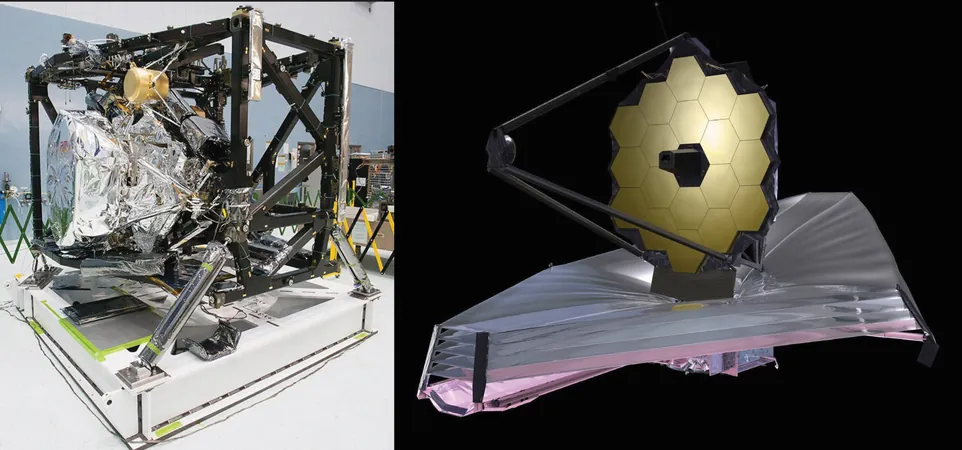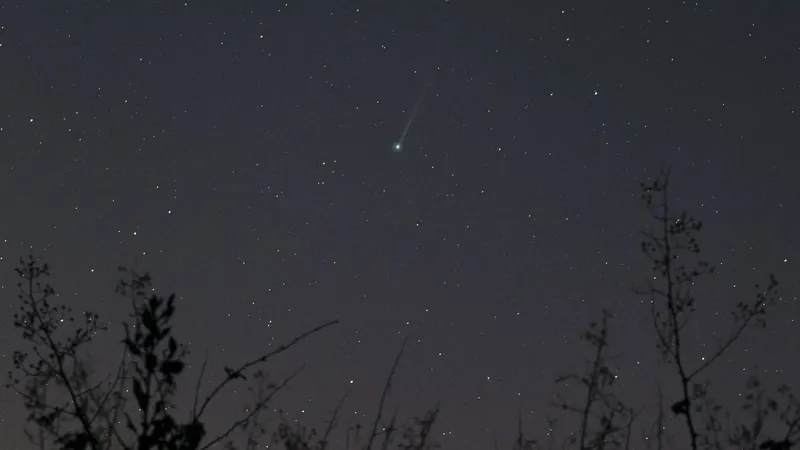
Groundbreaking Discovery: Mid-Infrared Flare Detected from the Milky Way's Supermassive Black Hole!
2025-01-14
Author: Benjamin
Groundbreaking Discovery: Mid-Infrared Flare Detected from the Milky Way's Supermassive Black Hole!
In a historic achievement for astronomy, an international team of scientists has made the first-ever detection of a mid-infrared flare emanating from Sagittarius A* (Sgr A*), the supermassive black hole at the center of our Milky Way galaxy. Utilizing the highly advanced MIRI (Mid-Infrared Instrument) onboard the James Webb Space Telescope, researchers have not only captured this elusive flare, but also observed related radio emissions lagging behind, providing essential insights into the dynamics of black holes.
Sagittarius A*, which possesses a staggering mass approximately 4 million times that of our Sun, has been a focal point of astronomical research since the early 1990s. Known for its periodic flares, these events can be monitored across various wavelengths, giving scientists the opportunity to enhance their understanding of black hole activity. Notably, imaging of Sgr A* by the Event Horizon Telescope in 2022 revealed striking visuals of this cosmic giant, yet mid-infrared observations remained a significant gap in our comprehension of these mysterious flares—until now.
The newly detected mid-infrared flare is a significant addition to the existing body of observational data. Mid-infrared light, lying between visible and radio wavelengths, is particularly advantageous for studying cosmic phenomena obscured by dust. As co-author Joseph Michail, a Postdoctoral Fellow at Harvard's Center for Astrophysics, points out, “Understanding Sgr A*'s rapid flare evolution across wavelengths has been a challenge. This discovery connects the dots and enhances our knowledge.
Despite the groundbreaking detection, scientists continue to investigate what fuels these energetic flares. The leading hypothesis revolves around the complex interplay of magnetic fields within the turbulent accretion disk surrounding Sgr A*. The phenomenon of magnetic reconnection, in which magnetic field lines converge and release energy, is fundamentally linked to the generation of flares. Electrons accelerated by this magnetic activity emit high-energy radiation—synchrotron emission—contributing to the explosive brightness observed.
Recent findings indicate that the mid-infrared emission corresponds with the electron dynamics involved in both the radiation process and the cooling that precedes these energetic events. Sebastiano von Fellenberg, a researcher at the Max Planck Institute for Radio Astronomy and lead author of the study, notes, “Our observations reveal a crucial interrelation between millimeter wavelength variability and mid-infrared flares, suggesting a deeper understanding of black hole physics is within reach.
In an exciting twist, simultaneous observations with the Submillimeter Array (SMA), Nuclear Spectroscopic Telescope Array (NuSTAR), and Chandra X-ray Observatory contributed additional context. Interestingly, no flare was detected in the X-ray observations this time, implying that the energy levels were not as high as seen in other flares. However, the SMA noted a millimeter-wave flare trailing the mid-infrared flare by about ten minutes, indicating a potentially fascinating sequence of events.
The caliber of this mid-infrared data underscores the James Webb Space Telescope's groundbreaking capabilities, paving the way for further exploration of supermassive black holes and their accretion processes. As we continue to unveil the secrets of Sgr A*, this significant step opens new avenues for inquiry, bringing us closer than ever to unraveling the mysteries of our universe's most enigmatic entities.
As researchers like Tamojeet Roychowdhury from the Indian Institute of Technology in Bombay prepare for advanced studies in this field, this discovery marks a thrilling chapter not only in the exploration of Sagittarius A*, but also in our broader quest to understand the cosmos. Stay tuned for future updates as scientists delve deeper into the enigmatic heart of our galaxy!









 Brasil (PT)
Brasil (PT)
 Canada (EN)
Canada (EN)
 Chile (ES)
Chile (ES)
 Česko (CS)
Česko (CS)
 대한민국 (KO)
대한민국 (KO)
 España (ES)
España (ES)
 France (FR)
France (FR)
 Hong Kong (EN)
Hong Kong (EN)
 Italia (IT)
Italia (IT)
 日本 (JA)
日本 (JA)
 Magyarország (HU)
Magyarország (HU)
 Norge (NO)
Norge (NO)
 Polska (PL)
Polska (PL)
 Schweiz (DE)
Schweiz (DE)
 Singapore (EN)
Singapore (EN)
 Sverige (SV)
Sverige (SV)
 Suomi (FI)
Suomi (FI)
 Türkiye (TR)
Türkiye (TR)
 الإمارات العربية المتحدة (AR)
الإمارات العربية المتحدة (AR)